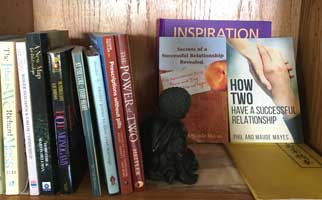Successful Relationship Reading Corner
 In this week's blog, we wrote about how to find mutual solutions and avoid conflict. Here is some more advice on doing just that. In this week's blog, we wrote about how to find mutual solutions and avoid conflict. Here is some more advice on doing just that.
Interpersonal Conflict and Effective Communication "Conflicts run all the way from minor, unimportant differences to disputes which can threaten the existence of a relationship. Conflicts with a loved one or a long-term friend are, of course, different from negotiating with someone who does not care about your needs, like a stranger or a salesperson. However, there is an underlying principle that underscores all successful conflict resolution. That is, both parties must view their conflict as a problem to be solved mutually so that both parties have the feeling of winning – or at least finding a solution which is acceptable to both. Each person must participate actively in the resolution and make an effort and commitment to find answers which are as fair as possible to both."
More About Dissolving Conflict, Part Two of Two "Act as if he means well, especially if he appears not to — not for his sake, but for yours. The more you can look to someone else's positive intent, the greater the likelihood you can respond to her comments before she adds more or elaborates. Follow this easy-to-remember four-step process when responding to criticism. Remember, it is never comfortable to hear negative comments, yet with this approach, you’ll increase your ease in the moment:" (P.S. The link to Part One is broken; find it here.)
Conflict Resolution Skills for Healthy Relationships "Conflict is a predictable part of virtually all relationships. It can also be a significant source of stress. Therefore, with most conflicts, it’s important to find a resolution. This seems like a statement of the obvious, but many people suppress their anger or just ‘go along to get along.' Some think that by addressing a conflict, they are creating one, and simply keep quiet when upset. Unfortunately, this isn’t a healthy long-term strategy."
|
|